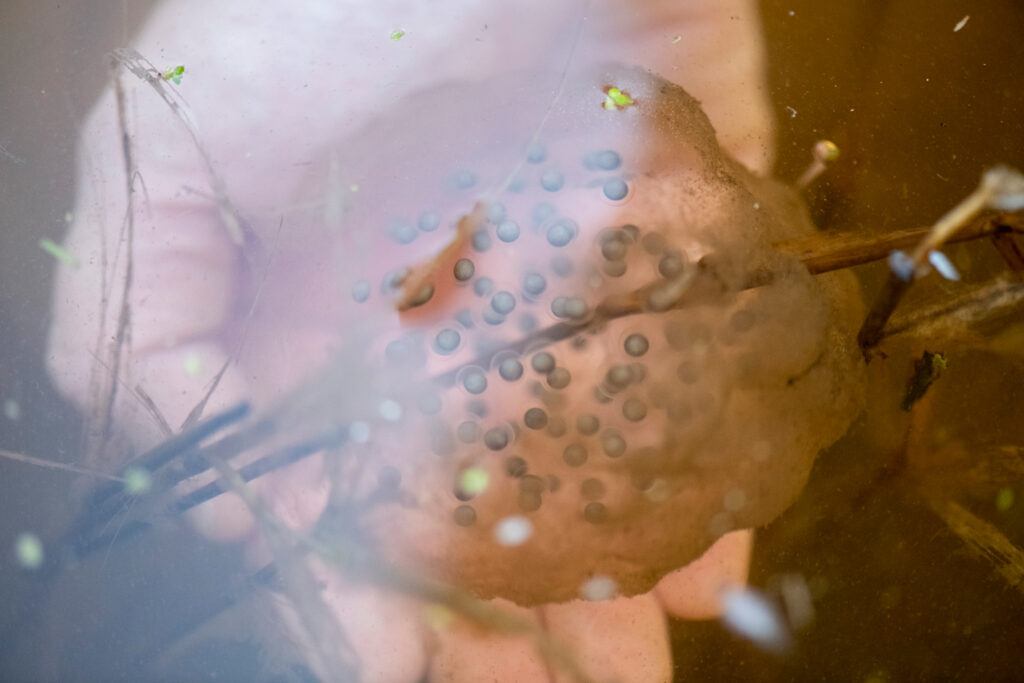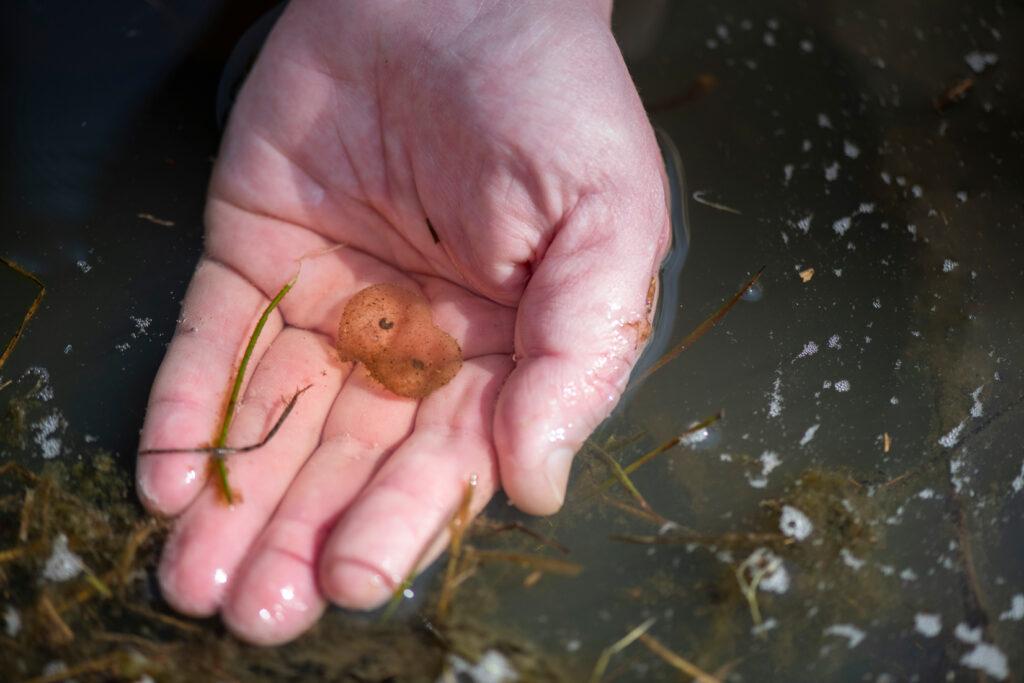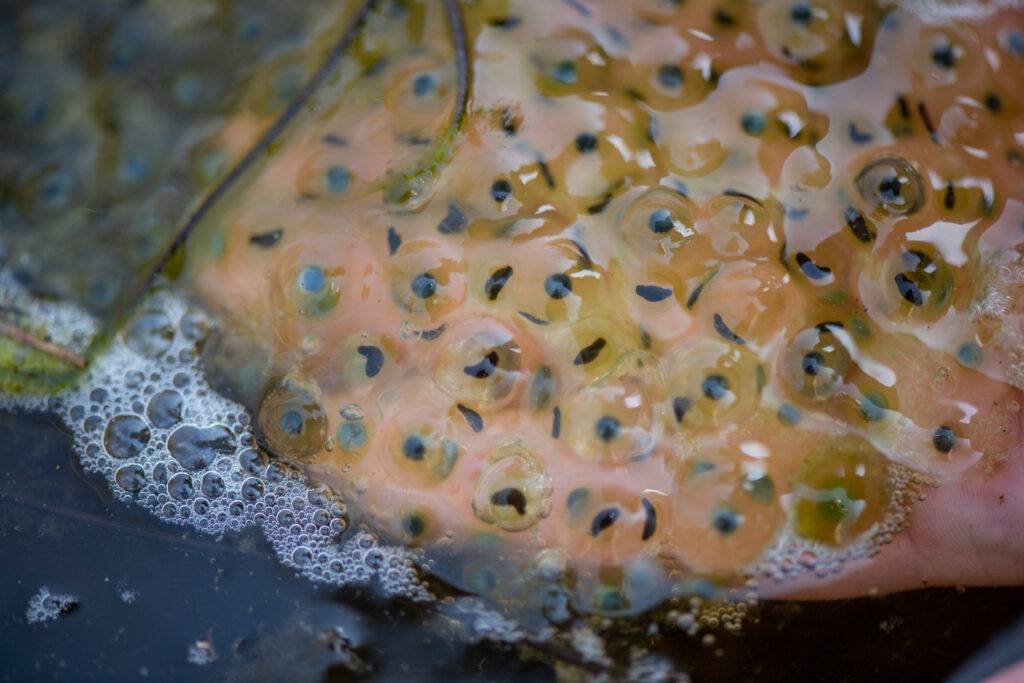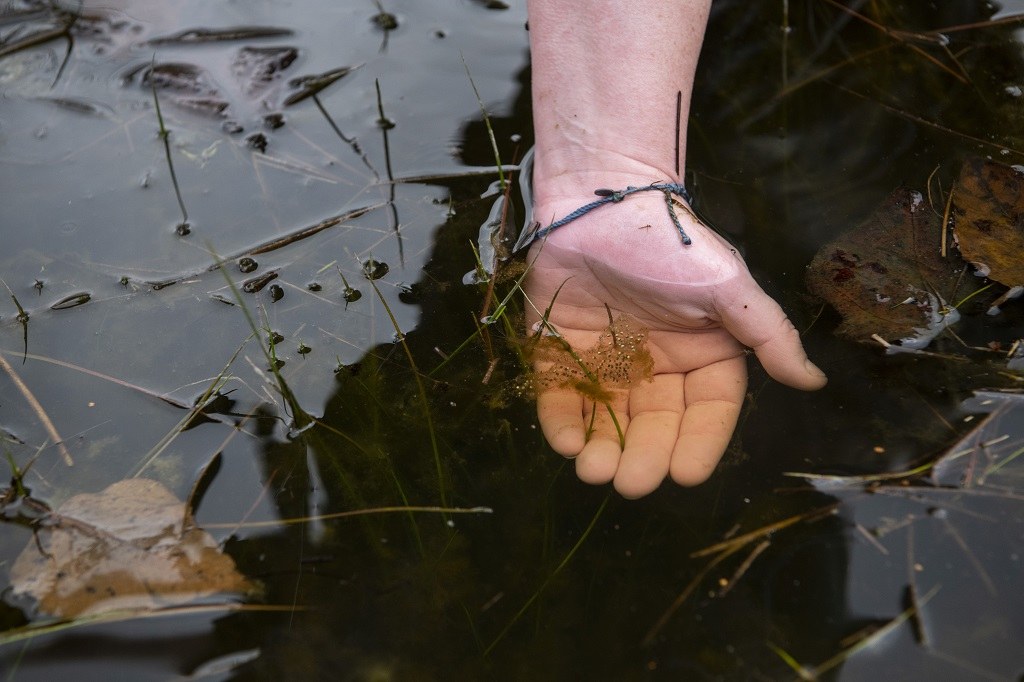What species of amphibians are thriving in the Pacific Northwest? One way to find out is to locate and identify their egg masses, and March and April are the perfect months to get outside and search.
This search frequently occurs at a 4-acre wetland mitigation site in a behind-the-scenes area at Northwest Trek. “This is an ideal place for monitoring egg masses,“ says Northwest Trek’s Conservation Program Coordinator Rachael. “Since the wetland’s restoration, we’ve identified eggs from seven of the eight monitored species of stillwater-breeding amphibians.”

Differentiating Egg Masses
You will commonly find egg masses of four species around Northwest Trek in mid-March: the northwestern salamander, Pacific treefrog, northern red-legged frog, and long-toed salamander.
As we search around the first pond at the mitigation site, Rachael gives us a clue: “As you scan the waters, look for an unusual shape, something transparent or translucent, and often attached to vegetation.”

After a few minutes in the water, we find our first egg mass! It’s the northwestern salamander’s egg mass, submerged only a few inches underwater. It’s slightly gelatinous, but you can feel its firmness with a delicate squeeze.

We move away from the first pond and make our way into the next pond. It’s not too long before we locate long-toed salamander eggs. Right away, we notice each egg already developing into the shape of salamander larvae and having more of a dark brown color. Rachael explains, “The long-toed salamander eggs have small packets and sometimes will only have a single egg per packet.” As they develop, they begin to resemble the shape of a comma.

During our search, we located one mass of the northern red-legged frog. Rachael tells us that the egg masses of this species have more of a grape cluster appearance with soft jelly. Often, they will drift off from the vegetation where they were initially laid and float to the surface of a pond before hatching.

Pacific treefrog egg masses are much smaller than those of the northwestern salamander. They’re packed together tightly and have only a thin layer of jelly. You might notice how closely they resemble a miniature galaxy.

Many of the egg masses found in March have now hatched, and the tadpoles have left their masses. We also found western toad eggs and western toads in amplexus. Amplexus is a type of mating behavior where the male holds the female toad around the waist in a hug, and at the same time or with some time delay, he fertilizes the eggs as the female lays them.

Monitoring amphibian egg masses – and training others to do it – is something Northwest Trek has been doing since 2011. Amphibian egg mass monitoring could be a matter of life or death for some species. The Oregon spotted frog is endangered in Washington and threatened Nationwide. It’s the only monitored species not spotted at Northwest Trek so far.
